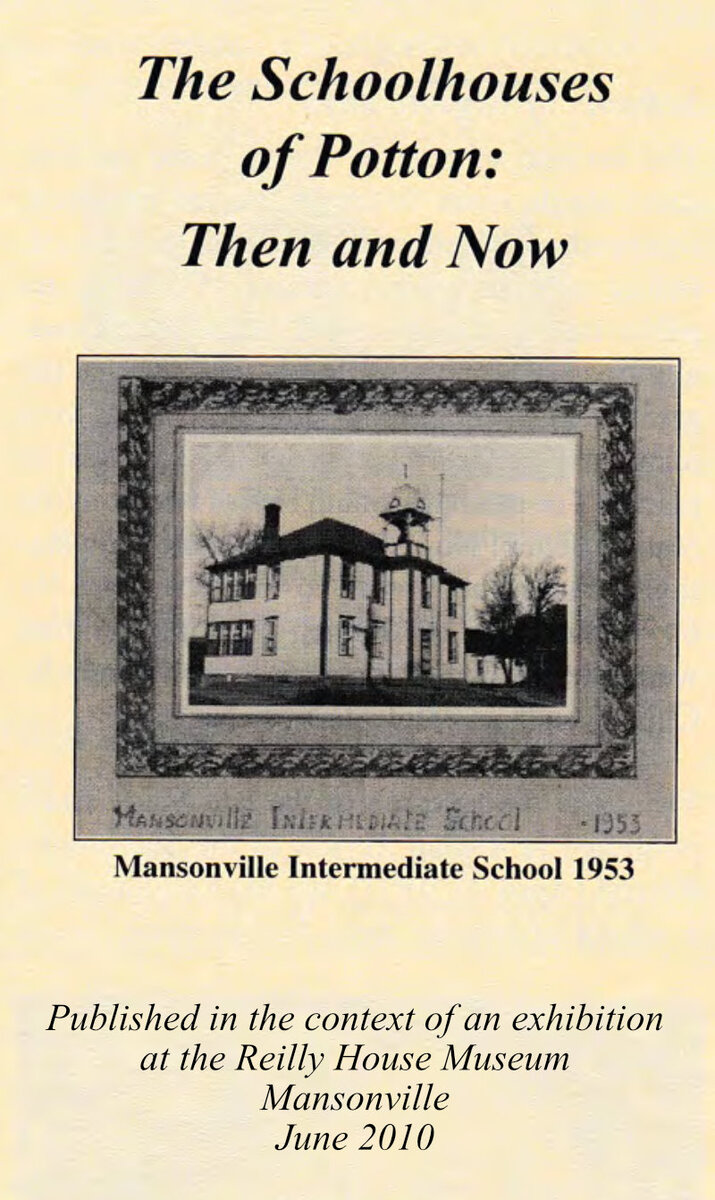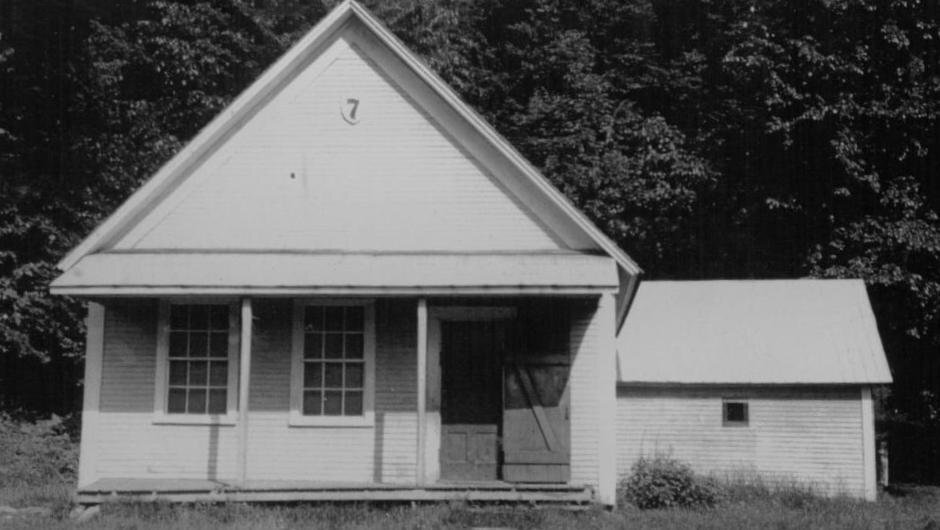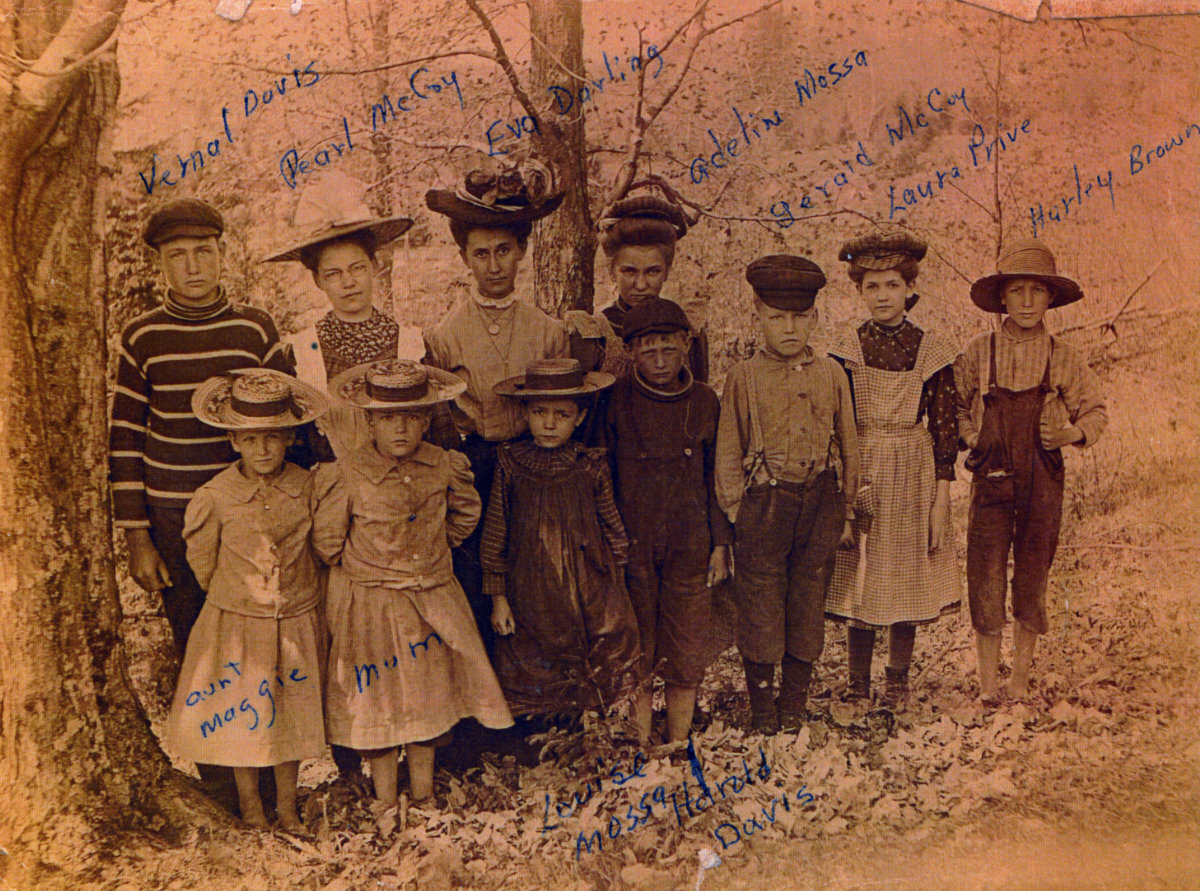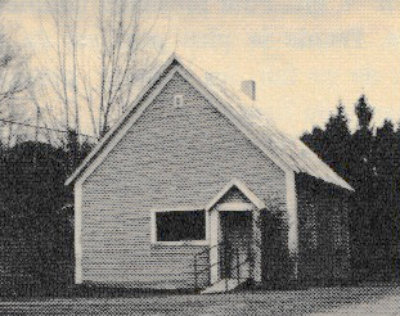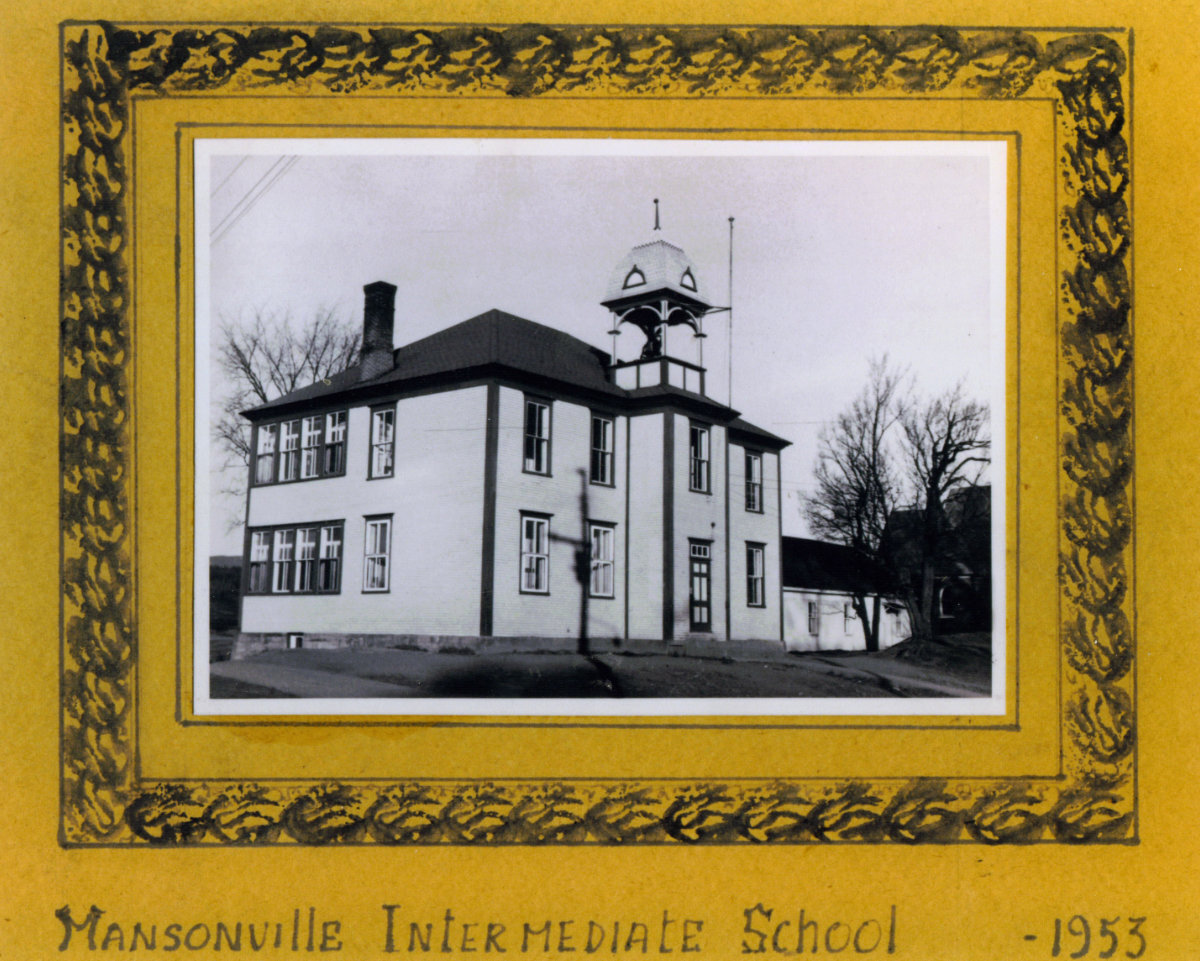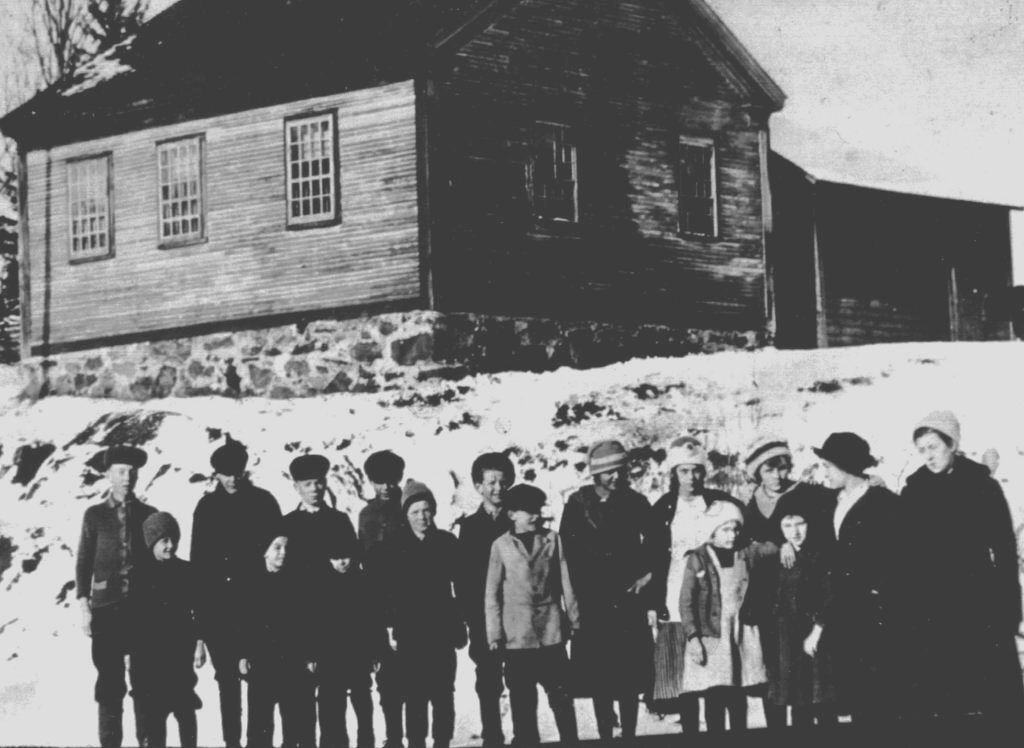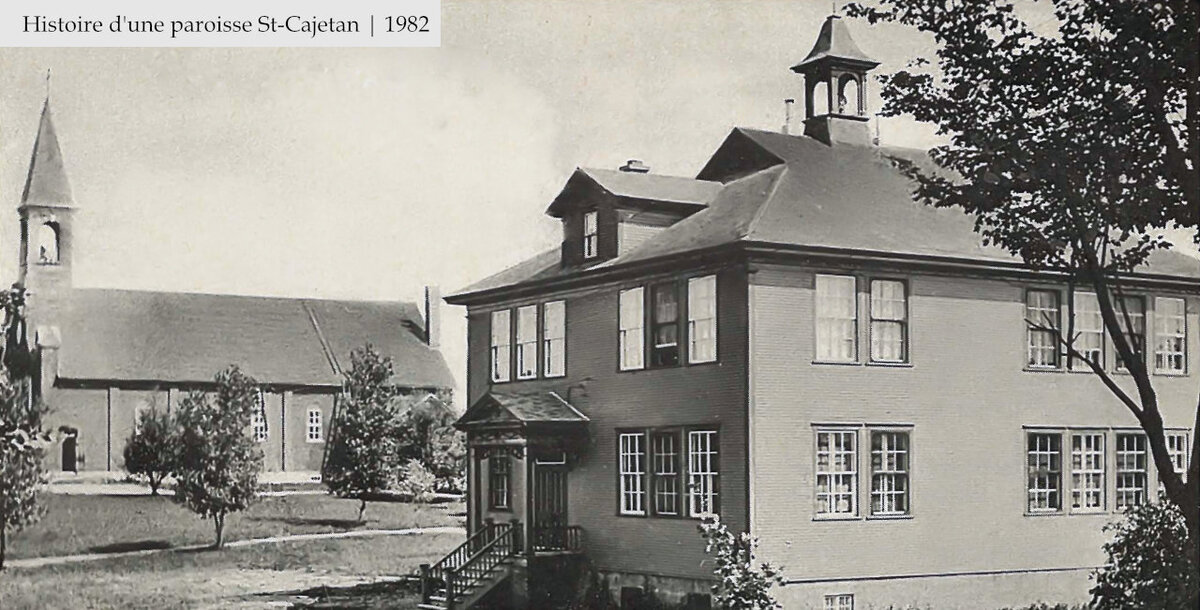This brochure was published as part of an exhibition
at the Reilly House Museum in Mansonville, in June 2010.
The Potton Schools
Altough the structured environment of a classroom is not the sole learning place for a child, school does play an irreplaceable role in his general education and development of social skills.
Schools of Bygone Days
The earliest schools in Potton were modest, small single-room buildings, heated by a wood stove, equipped with neither black board nor pencil. Indoor plumbing was unheart of. Since no public transportation existed, schools were usualy located within walking distance of the greatest number of families.
Schools were numbered or given the name of families or places. For example, South Hill or Mansonville Station School No. 2, located near the train station of that name, Sweat No. 7 or Blanchard No. 6. Schools for the French-speaking children were often named with reference to Catholic Chuch, such as Sainte-Thérèse No. 5.
Thanks to the reaseach of late Maria Bray, published in Annual Review (April 27, 1973), we have a glimpse of the school of bygone days.
For instance, Sweat School No. 7 was a school/church, built in 1840. The classroom of this school featured a choir loft at one end of this dual-purpose building. The lectern used by the teacher during the week, became the minister’s pulpit on Sunday. Students who could write were provided with long benches with a shelf, while the other, less advanced children had only a bench. Early education was basic, comprised generally of arithmetic, spelling and grammar.
The school year calendar varied with the age of the children: younger ones went to school in summer, and the older ones in fall and winter when their help was less essential for summer work on the farm.
In those early days, a school year was only seven months long.
By the 1920’s, some children of Sweat School had a mile or two walk to school, rain or shine. Others came by horse and buggy, or sleigh, in winter.
For two years, Robert Kirby drove a team of horses twice daily, ferrying about fifteen children on Route 243 and the Traver Road area, back and forth from school to home.
The overview about Sweat School seems to describe the prevailing conditions amongst all single classroom schools in Potton during the 19th century.
The teacher’s life was not an easy one. In addition to lesson preparation and teaching grades one to seven to a variety of youngsters, a teacher was also required to keep the school clean and heated. If an older boy wasn’t available for the task, teachers had to split and carry the wood required for the day’s heating. A teacher’s salary was around $1.00 per week, plus an allowance for room and board with a local family when not living in the school itself.
In those days, and for many years, one of the most important events of the school was indeed the Inspector’s twice yearly visit, to take note of the pupil’s knowledge and their progess. In spite of much preparation by the teacher, kids would be kids! Some students are paralyzed with shyness, while others are very anxious to be noticed! All come to school dressed in their best, to greet the important visitor with a loud “Good day, Mister Inspector!”
The Inspector’s observations were carefully noted with replies and student comportment, reflecting upon the teacher’s competence and on the grade which would appear in the school register. Often, the Inspector would reward the best, or most improved student with a book autographed by this important visitor.
The Protestant Schools
English speaking settlers were predominantly Protestant. Schooling was a priority for these families, who were anxious that their children be educated. According to historians Cyrus Thomas and C.M. Day (1869), our first school dates from 1809. It followed a petition from Hendrick Ruiter and others, to Sir Gordon Drummond, Administrator-in-Chief.
The first school was built in Mansonville. For more than twenty years, it was the only school in Potton. Later, eighteen Protestant schools were raised in different parts of the countryside and most of these were also used as meeting halls for Bible study and Church services on Sundays.
Among the teachers who left their mark at the Sweat School are brothers Luke and Henry Knowlton. According to Mrs. Bray, the Rev. Ernest Taylor not only began his own education in the Sweat School No. 7, but taught there in 1867-68, later becoming Inspector of Schools. Erma Jones Perkins, a local girl and Macdonald College graduate, taught in this school for 14 years.
Not all teachers were accreditted. Abner W. Kneeland, a 17 years old young man without formal training, taught at Blanchard School, located on Route 243 across the cemetery of the same name. Kate Magoon taught at the Jone’s No. 12 in Vale Perkins, and Miss Brown taught in Highwater for forty years.
Schools in Mansonville have known a somewhat turbulent history. The first school was opened in 1825 with the encouragement of Robert Manson, but it lasted only six years. Then, until 1863, high school classes were held in the Anglican Church. The following year, land between the Methodist (now United) and the Anglican churches, were the cenotaph now stands, was purchased and the Mansonville Academy was built. By 1889, this school building was too small and too cold in winter.
A new site was purchased from David Manson on the east side of the Missisquoi River, on the road to Vale Perkins. A two-story brick building was erected, the 2nd Mansonville Academy, but it burned down in 1892.
In 1893 a new school, the 3rd Mansonville Academy, was built at the site of the first school which, sometime after 1902, was renamed Mansonville Model School. In 1915, it became the Intermediate School, offering schooling to Grade 10. It was located where the cenotaph is today. A typhoid epidemic in 1923 forced the closure of the school in order to use the building as a Red Cross hospital.
Around the mid 1930’s the English population began a slow decline. Fewer children meant fewer schools were needed. At one time there were eighteen rural schools in the township; however, only seven remained in 1935. Construction on the present English school began in August 1952. It was then known as Mansonville Intermediate School, and was officially opened on September 25, 1953. When only Grades 1 to 7 were offered, this school’s name was changed to Mansonville Elementary School. Today the last of English schools in Potton, it has only about twenty pupils.
The French Catholic Schools
French speaking Quebecers arrived in Potton around 1860. While the Protestants first built schools and only later their churches, it was the inverse for the Catholic population. As demographics changed, English schools such as Sugar Loaf before 1889 became Catholic rural schools. There were nine French schools in the entire Township: Laliberté No. 5, Christ-Roi No. 7, Sainte-Thérèse No. 4, to name three of these.
For several French families in the Township, the closest school was Protestant and English, making it more practical to send their children there. In Mansonville, the first Catholic church was built in 1880 and the first school afterwards, on the site now occupied by the CLSC.
In 1919, the second Saint-Cajetan church was built and the first one was moved across Main Steet. In 1924, the Filles de la charité du Sacré-Coeur de Jésus, an order of nuns, operated there a boarding house for young boys and girls who lived too far away from school for daily walking. Mrs. Rita Boucher-Marcoux boarded there for one year with her three sisters and one brother. This boarding house is now the private residence of the Carrier family.
According to Paul Rouillard, a Christmas candle started a fire which levelled the first school, probably in 1930. It was rebuilt by a Mr. Albert Benjamin from Potton. On November 21, 1931, the Nuns occupied the new school. The place became known as the Couvent, in which it continued to provide room and board to the Catholic children from the outlying areas of the Township – such as Highwater.
In 1957, a new school, Notre-Dame-des-Lumières, provided education up the Grade 11. The Filles de la charité du Sacré-Coeur left the school in 1965 and, the following year, the secondary level classes were transferred to the école de La Ruche, in Magog. In 1983, the Mansonville school was renamed école du Baluchon. Today, there are about sixty children at the primary level. Consideration is being given to the merits of merging both English and French Schools.
Note from the authors
The sources of information on the early schools are short on detail. Often the information is contradictory. The in depht research required is boyond the objectives of this publication.
Sources
- Mrs. Rita Boucher-Marcoux
- Mr. Roger Deschênes
- Histoire d'une paroisse, St-Cajetan, d'un village, Mansonville, d'une municipalité, Potton, 1982
- Yesterdays of Brome County, BCHS, Vol. III et VIII
- History of Brome County, Vol. II, Ernest E. Taylor, 1937
- Photos d'archives de l'Association du patrimoine de Potton
Production Team
Research and text: Gérard Leduc and Sandra Jewett
Graphic design: Eureka! En Estrie
First edition: 2010
Web edition: Serge Normand, 2024
Web edition revision: Jacqueline Robitaille, 2025
